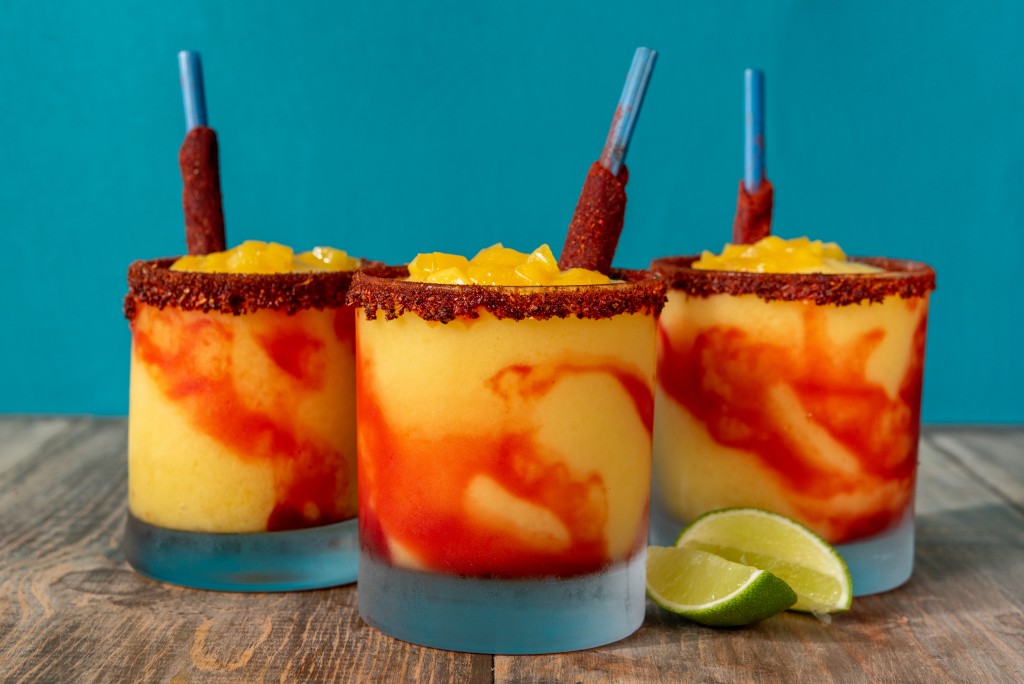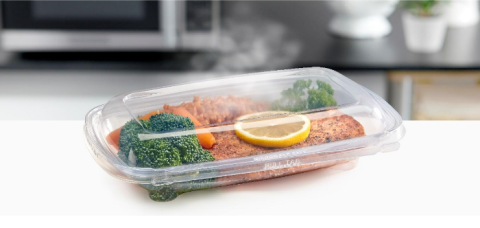Crafting a fruit-forward beverage menu to satisfy today’s consumer cravings
By Emra Nation, National Accounts Manager and Culinary Development Specialist,
The Oregon Fruit Company
Fruit. It’s colorful, aromatic and delivers taste and texture. For today’s consumers, fruit satisfies their cravings for sensory sipping experiences and healthy, yet indulgent beverages. For food operators, adding real fruit to beverage menus has proven to generate juicy returns.
Beverages are the leading application of fruit and meet trending consumer demand for drinks made with natural ingredients.1 Incorporating real fruit in lieu of syrups will instantly upgrade any beverage menu to something premium, regardless of whether it’s in cocktails or non-alcoholic beverages.
I grew up working in restaurants and made a career in the foodservice industry for nearly two decades before joining The Oregon Fruit Company. My direct industry experience helps me work with mixologists and culinary professionals behind the line to create original recipes that drive the bottom line. Here’s some things to consider when adding real fruit to your beverage menu.
Set Your Operation Up for Success
First, pick the right partner. A solution-driven supplier will provide the expertise and resources needed to successfully add real fruit to your beverage menu. When introducing real fruit, operators often encounter three challenges: price, labor, and equipment.
Real fruit doesn’t need to be picked fresh from the vine. Fresh fruit also generates a lot of waste, both in product and labor. Instead, incorporate cost-effective real fruit products such as Oregon Fruit Co. Diced Pourable Fruit and Smooth Pourable Fruit, both of which ship frozen so there’s no shelf-life issue and they take knives out of hands. Simply thaw and pour to create a beverage bursting with flavor and vibrant color. These products are also versatile. While primarily used in beverages and milkshakes, they’re ideal as condiments and in dressings, sauces, dips, salsas and more. Depending on your goals, fruited beverages can be introduced with pre-made lemonade products that are delicious on their own, while also pairing well with other fruit products or as a cocktail mixer. Additionally, you’ll need proper space and equipment. To minimize your upfront investment, seek a supplier with a turnkey equipment program, including bubblers, slushie machines, and countertop refrigeration solutions.
The End-User Should Always be Top of Mind
Understanding your customers’ taste preferences is key to developing a successful beverage menu. Are your customers adventurous and eager to try something unusual like a blood orange milkshake or prickly pear margarita? Or do your customers frequent your establishment because they want something familiar like blueberry lemonade or peach iced tea? Working with a supplier that embraces collaboration will help you understand your customers better and develop recipes informed by consumer trend data to foster brand loyalty and repeat business. For instance, we know that Millennials and Generation Z patrons are more adventurous than Generation X or Boomers and “Boomers are more attached to familiar and traditional tastes but also will experiment with lower-risk seasonal and limited-edition flavors.” (2)
Embrace Innovation
Innovation is embraced through both ingredient profiles and beverage formats. The most common use of real fruit in beverages is smoothies. Fruited lemonades and teas are also popular (think strawberry lemonade or raspberry iced tea) and continue gaining popularity as more consumers limit their soda consumption.
As The Oregon Fruit Company’s resident culinary and mixologist specialist, I’ve recently enjoyed tapping into innovation by playing around with fruit in milkshakes. Fruit and dairy are a natural pairing and can be successfully introduced together as a creamsicle-inspired milkshake LTO, for instance, offering patrons a nostalgic nod to orange creamsicles with a modern twist by using tangerine. The industry is also seeing a lot of growth in agua frescas, making water more profitable, and cold coffee is now ordered more frequently than hot coffee by Gen Z, further fueling cold coffee growth opportunities. (3) Think fruited lattes, mochas and cold foams.
Seasonal fruit beverages offer great variety and are big sellers. With spring and summer right around the corner, consider LTOs featuring trending tropical varieties such as Purple Dragon Fruit, which has grown 24.2% YOY in both non-alcoholic and adult beverages.(4) This seasonal fruit is ideal for lemonades and iced teas, or mojitos and mules on the cocktail menu. According to a 2023 Innova Marketing Insights trend report, at least one-third of consumers say “they are influenced by new, unique or different flavors, and one quarter want interesting or exotic flavors,” which represents an increase from 2022.(2)
Develop a Marketing Campaign
Now that you’re ready to satisfy consumer cravings with fruit-forward beverages, it’s time to get the word out! First, we know from Technomic that including the words “real fruit” in a product description increases purchase intent. “Real Fruit” gives customers something to feel good about when they’re making beverage selections and provides clarity into what they’re receiving. For instance, it’s not strawberry flavoring or syrup, it’s real strawberries.
When I think of successfully marketing real fruit, I often refer to Dutch Bros. and the success of their Mangonada LTO in 2023, which was topped with Oregon Fruit Co. Strawberry Diced Pourable Fruit. Their campaign featured large window clings, menu and website callouts and social media all touting the use of “real fruit.” This single LTO drove more than 3 million drinks in a single quarter.
Finally, your patrons will help sell your new recipes, as the visual appeal of having fruit in a beverage makes it instantly more “Instagrammable.” We know that Millennials and Generation Z consumers are far more likely to make purchasing decisions based on social media, and will often try a beverage simply because it is trending on social media(5). Tap into that FOMO moment with something that looks cool and tastes delicious.
With the new year comes new opportunity — harvest the power of real fruit and you’ll uncover the secret ingredient to a more profitable beverage menu.
Sources
(1)Mordor Intelligence report: “Fruit And Vegetable Ingredients Market Size & Share Analysis – Growth Trends & Forecasts (2023-2028).
(2) Innova Marketing Insights: Food and Beverage Trends Drive Global Flavor Trends (2023)
(3) Mintel, Coffee’s Fourth Wave: What it means for retail and foodservice coffee brands, August 2022
(4) Technomic National Food Trends, Q4 2023 v Q4 2022
(5) Datassentials, Motivators to Try New Non-Alcoholic Beverages, September 22, 2023








